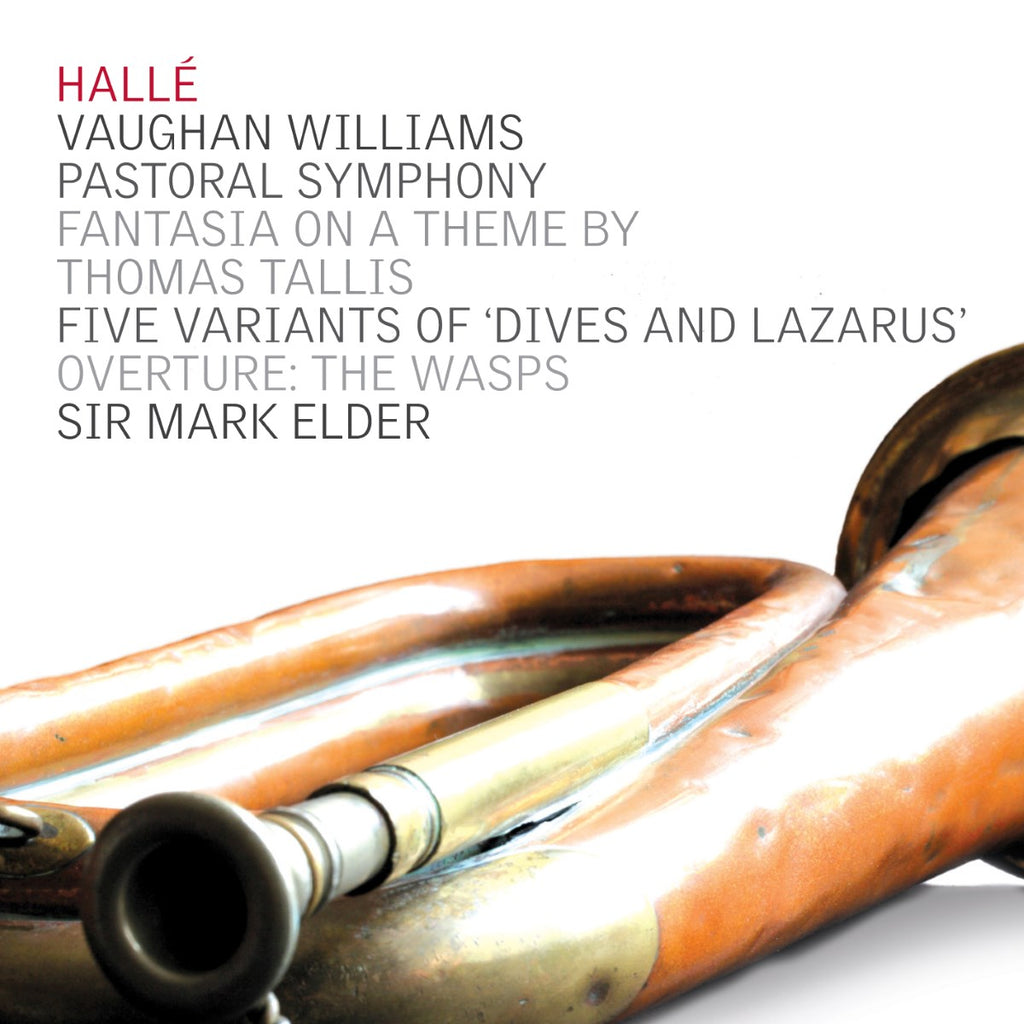
Vaughan Williams Pastoral Symphony (Symphony No.3)
Two of Vaughan Williams’ most popular works, Wasps Overture and Tallis Fantasia, are coupled with arguably his greatest and most original Symphony and a delightful multiple setting of a folk-song that enchanted the composer throughout his life.
The Wasps Overture, from the Suite which Vaughan Williams extracted from the 1908-09 score of his incidental music to an ancient Greek play by Aristophanes, has become one of the composer’s most popular works. From the opening orchestral buzzing of a swarm of wasps, culminating in a fortissimo sting, through a jolly folk-like tune, a brisk march and a broad stately melody which sweeps in on the strings and emerges as one of English music’s great tunes, this work is a showcase for the vivid orchestral colours of Vaughan Williams’ writing.
Fantasia on a Theme by Thomas Tallis has become one of Vaughan Williams’s most frequently played works and is acknowledged as one of the greatest examples of writing for strings. Although the treatment of Tallis’s theme is mainly contemplative, there are dramatic and passionate moments in the Fantasia, which is scored for two string orchestras (the second orchestra comprising only nine players) with solo quartet.
The ‘Pastoral’ Symphony is characterised with a mood that is gently elegiac and dark and that reflects the work’s true genesis. Although the title mistakenly led audiences and critics to associate the work entirely with rural landscapes and English folk-song, it is in fact directly related to the First World War. Vaughan Williams, although forty one when war was declared, enlisted as a private in the Royal Army Medical Corps and served as a wagon orderly in France. Like many others, he never spoke afterwards of the horrors he had witnessed there, but they left their mark. Echoes are heard throughout the work, including the second movement’s use of natural notes (inspired by the wartime memory of a bugler) and the cadenza for E flat trumpet which creates the effect of an ethereal Last Post, provoking an anguished heart cry before it returns on the horn. The addition of a wordless solo voice above a quiet drum roll at the start of the fourth movement is further evidence of the dark and solemn inspiration of this most evocative of symphonies.
Five Variants of ‘Dives and Lazarus’, for strings and harps, was written for the New York World Fair in 1939, when Sir Adrian Boult conducted the first performance in Carnegie Hall. Vaughan Williams first encountered the folk-song Dives and Lazarus in 1893, when he was 21, later collecting several versions, and in this mature work he displays his affection for the melody in variants which are reminiscences of various versions in several folk-song collections, including his own.
Conductor
Sir Mark Elder
Soprano
Sarah Fox
Catalogue number CD HLL 7540




